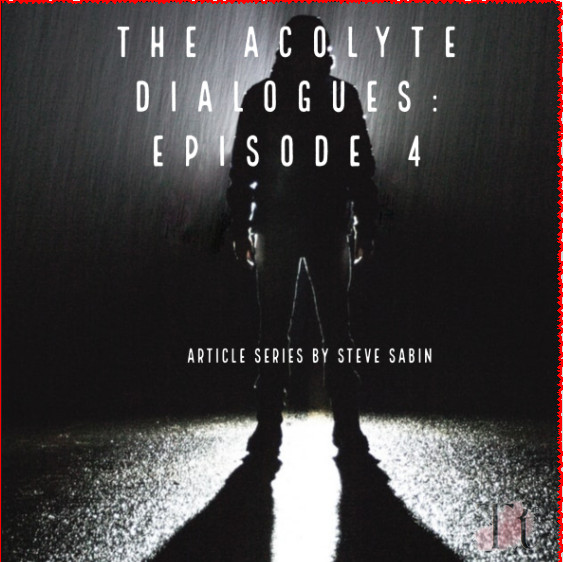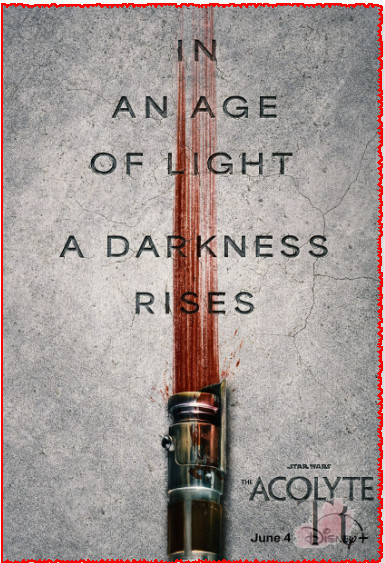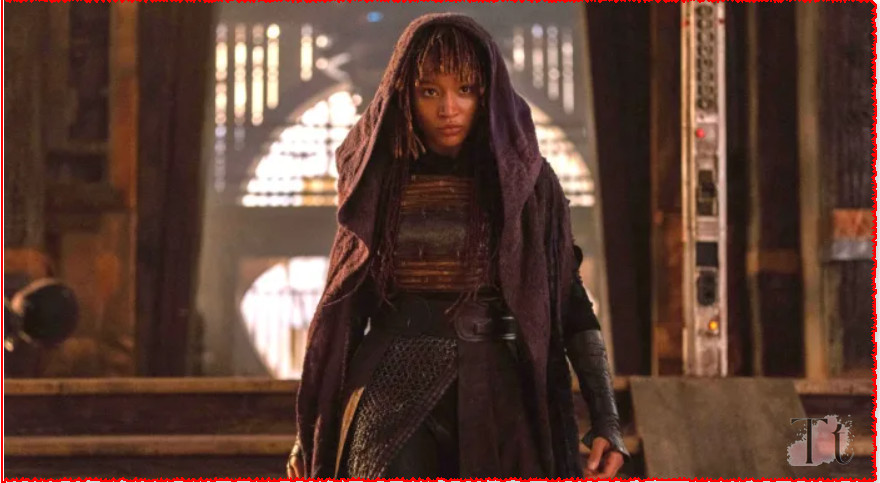Certainly! Let me provide a detailed and comprehensive expansion on the review of the first two episodes of Star Wars: The Acolyte, explaining various aspects and offering a deep dive into the themes, characters, plot, and production elements.
Table of Contents

Introduction to Star Wars: The Acolyte
Introduction to Star Wars: The Acolyte
Star Wars: The Acolyte is the latest addition to the expansive Star Wars universe, a franchise that has captivated audiences for decades with its epic tales of good versus evil, complex characters, and a richly developed galaxy. Created by Leslye Headland, this series marks a significant departure from the familiar territory of the Skywalker saga, setting its story during the High Republic era. This period, predating the events of the Skywalker saga by several centuries, represents a time of relative peace and prosperity in the galaxy, often referred to as the golden age of the Jedi.
The High Republic Era
The High Republic era is a fascinating period within the Star Wars timeline, characterized by the height of the Jedi Order’s influence and power. During this time, the Jedi are not just peacekeepers but also explorers and pioneers, extending their reach to the farthest corners of the galaxy. The Republic, under stable and enlightened governance, thrives, and the dark side of the Force is largely in check. This era provides a fresh backdrop for storytelling, free from the shadow of the Empire and the Sith Lords that dominate the later periods.
Fresh Narratives and New Characters
One of the most exciting aspects of The Acolyte is its promise to deliver fresh narratives unconnected to the established storylines and characters of the mainline films. This break from tradition allows the series to explore new themes and introduce a host of original characters, offering a unique perspective on the Star Wars universe. By focusing on a different era and a new set of protagonists, the series has the potential to expand the lore in innovative ways and provide deeper insights into the Jedi Order and its principles.
Series Creator Leslye Headland
Leslye Headland, the creator of The Acolyte, brings a fresh voice to the Star Wars franchise. Known for her work on projects like Russian Doll, Headland is celebrated for her ability to blend intricate storytelling with character-driven narratives. Her involvement in The Acolyte signals a deliberate move towards a more nuanced and layered approach to the Star Wars mythos, potentially infusing the series with a blend of mystery, intrigue, and complex character arcs.
Exploration of the Golden Age of the Jedi
The golden age of the Jedi, as depicted in The Acolyte, promises to be a visually and thematically rich setting. This period is marked by the Jedi’s exploration of the galaxy, the establishment of new outposts, and their role as beacons of peace and justice. It’s a time when the Jedi are not yet the war-torn warriors seen in the prequel trilogy but are instead portrayed as enlightened guardians and scholars. The High Republic era, with its advanced technology, grand architecture, and utopian ideals, provides a stunning backdrop for the series.
Potential for Intriguing Storylines
By setting the series in the High Republic era, The Acolyte opens up numerous intriguing story possibilities. The show can delve into the complexities of the Jedi Order, exploring not just their strengths and achievements but also their internal conflicts and philosophical dilemmas. It can also introduce new adversaries and challenges, unconnected to the Sith but equally formidable. The era’s political landscape, with its different factions and interests, offers a rich tapestry for intricate plots and power struggles.
Breaking Away from the Skywalker Saga
One of the most significant promises of The Acolyte is its departure from the Skywalker saga. While the Skywalker storyline has been the backbone of the Star Wars narrative for decades, its conclusion in The Rise of Skywalker leaves room for new stories to be told. By shifting focus away from the Skywalkers, the series can explore fresh themes and perspectives, attracting both longtime fans and newcomers who may not be as invested in the original saga.

Initial Expectations and Disappointment
From the outset, The Acolyte held the promise of reinvigorating the Star Wars franchise, particularly for fans who may have felt disenfranchised by the more recent entries in the series. The reviewer’s anticipation was rooted in the hope that this show would break away from the trend of relying heavily on legacy characters and instead deliver a novel and engaging story. However, the initial episodes left the reviewer feeling empty and uninterested, a sentiment that can be attributed to several factors discussed below.
Plot Overview
The primary narrative of The Acolyte revolves around two central characters, Osha and Mae, twins who were separated during a catastrophic event that destroyed their hometown. The series sets up their divergent paths and eventual convergence as the crux of the story.
- Osha’s Journey: Osha becomes a Jedi but eventually leaves the Order to become a meknek, an illegal freelance mechanic. Her character is complex, embodying themes of disillusionment and searching for purpose beyond the rigid structure of the Jedi Order.
- Mae’s Descent: In contrast, Mae’s path leads her into the influence of a dark entity, where she is trained in the use of the Force for malevolent purposes. Her character represents the allure and danger of the dark side, a recurring theme in Star Wars.
- The Conflict: The central conflict arises when Mae embarks on a spree of Jedi killings. Osha, mistakenly arrested in Mae’s place, reconnects with her former master, Sol (played by Lee Jung-jae), to investigate and stop Mae.
Characters and Performances
While the plot is intriguing on paper, the reviewer notes a lack of emotional engagement with the characters. Despite this, the cast’s performances, particularly those of Lee Jung-jae as Sol and Manny Jacinto as Qimir, are praised for their vitality and depth.
- Osha: As a former Jedi turned rogue mechanic, Osha’s character arc is meant to explore themes of personal growth and the struggle between duty and freedom. However, the reviewer feels that the show rushes through her development, preventing a deeper connection.
- Mae: Mae’s descent into darkness and her transformation into a Jedi killer is pivotal to the plot. Yet, her motivations and the nature of her relationship with her dark mentor remain too vague to be compelling at this stage.
- Sol: Lee Jung-jae’s portrayal of Sol, Osha’s old Jedi master, is highlighted as a standout. His dynamic with Osha is one of the more interesting aspects, yet it suffers from a lack of sufficient backstory to fully invest viewers.
- Qimir: Although a minor character, Qimir, a former smuggler aiding Mae, brings a refreshing energy to the scenes he is in. Jacinto’s performance is noted for adding much-needed charisma to the show.
Production Quality and Aesthetics
Despite the narrative and character issues, the production values of The Acolyte are undeniably high. The reviewer commends the series for its visual appeal and technical execution.
- Visuals and Environment: The series is described as a “visual treat,” with meticulously crafted environments that bring the High Republic era to life. The use of lighting and set design is particularly noted for enhancing the immersive quality of the show.
- Costume Design: The costumes are a highlight, showcasing intricate designs that elevate the series above previous Star Wars entries. This attention to detail helps establish the period and enriches the world-building.
- Fight Scenes: The choreography and filming of fight scenes are praised for their clarity and purpose. Unlike some action sequences in other series, The Acolyte manages to maintain coherence and excitement during these moments.
Writing and Dialogue
One of the major criticisms of the show lies in its writing. The reviewer finds the dialogue stilted and uninspired, detracting from the overall experience. Despite the strong performances by the cast, the script does not provide the necessary depth or originality to fully engage viewers.
- Dialogue: The dialogue is described as predictable and lacking in creativity. This issue hampers character development and emotional investment, making it difficult for the audience to connect with the story.
- Pacing and Structure: The pacing is another concern. The reviewer suggests that the show could benefit from a more gradual introduction to its characters and plot. By thrusting Osha into the central conflict too quickly, the series misses an opportunity to build a stronger foundation for her character and her relationships.

Emotional Engagement and Impact
A critical aspect of any successful show is its ability to evoke emotions and make viewers care about its characters and story. According to the reviewer, The Acolyte falls short in this regard. Despite the high stakes and dramatic events, the episodes fail to elicit a strong emotional response.
- Character Investment: The lack of sufficient backstory and character development results in a disconnect. The audience is not given enough reason to care deeply about Osha, Mae, or their journey.
- Villain’s Intrigue: Mae’s dark side mentor is presented as a generic “big bad evil guy,” lacking the complexity or intrigue needed to make the antagonist compelling. Without a deeper understanding of his motives or identity, the character fails to generate genuine interest.
Potential for Improvement
While the initial episodes of The Acolyte have their flaws, there is potential for the series to improve. The foundational elements are in place, and with adjustments to the pacing, character development, and writing, future episodes could build on the show’s strengths.
- Character Development: Spending more time developing the backstories and relationships of the main characters could enhance emotional engagement. Giving Osha and Mae more depth would make their conflict more impactful.
- Plot Complexity: Adding layers to the plot and providing more context for the dark side mentor’s motives could increase the intrigue and suspense. Exploring the political and social dynamics of the High Republic era might also add richness to the story.
- Writing Quality: Improving the dialogue and narrative structure would address one of the key weaknesses. More nuanced and creative writing could elevate the series and make it more engaging.
Conclusion
In conclusion, Star Wars: The Acolyte starts with an intriguing premise and boasts impressive production values, but it struggles with character development, writing, and emotional engagement. The reviewer’s disappointment stems from the potential the show had to break new ground in the Star Wars universe and its failure to fully capitalize on that potential. However, with adjustments and a deeper focus on its characters and story, the series could still find its footing and become a worthy addition to the Star Wars canon.


1 thought on “The Acolyte Episodes 1 & 2 : Dynamic Critique”